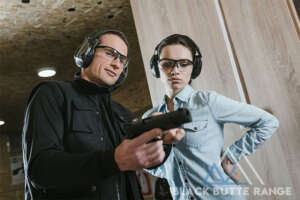A GUIDE TO AMMO
The ammunition marketplace is crowded with many different manufacturers and types. Although price can be one factor in choosing ammunition, you should choose the ammo that fits your needs. Training ammo and service-grade defense ammunition are much different. Here is a primer on ammo to help you understand the many options when you’re shopping.
ANATOMY OF A CARTRIDGE
Although ammo is often referred to as bullets, the actual term is a “cartridge” which has the casing and bullet. The case is the shell that holds the cartridge together. Inside the case is the explosive powder, AKA propellant, that when it explodes, it sends the bullet out of the barrel. The bullet is the projectile. Ammo is usually typed by what type of projectile is seated in the cartridge.
CARTRIDGE METALS
Casings usually come in brass, aluminum or steel. Brass has the ability to expand under pressure in the chamber, which means the integrity of the cartridge isn’t compromised. Brass cartridges can also be reloaded, but they do tend to cost more than aluminum or steel. Aluminum or steel are cheaper than brass, but not suited to reloading.
FULL METAL JACKET ROUNDS
Full metal jacket rounds have a soft metal core, usually lead, surrounded by hard metal. These rounds can be inexpensive, but they don’t make good CCW ammo. Lead is a cheap material, so FMJ rounds are better for practice, not for defense. An FMJ round won’t expand when striking a target. Instead, it goes through the target, potentially hitting bystanders.





